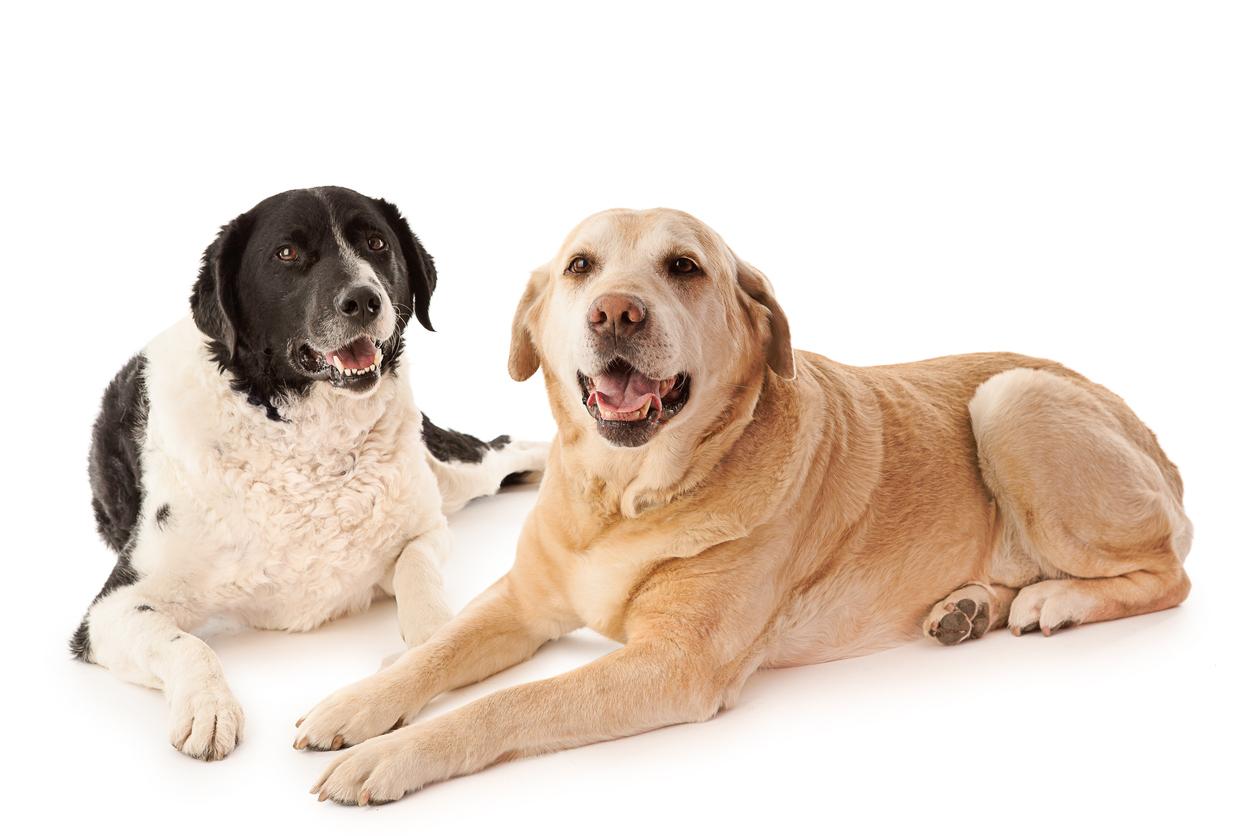Overview
Some dogs (and rarely cats) can develop a weakening of the motion of the arytenoid cartilages, due to the weakening of the nerve that controls them (the nerve is called the recurrent laryngeal nerve). It is not fully understood why this nerve weakens, and there could be an autoimmune component to this problem, but we do know that it is very common to see other nerves in the body becoming weak too. The other issues that we tend to see commonly are hind leg weakness which can result in dragging or scuffing of the nails when walking, abnormal crossing over of the feet when walking, and sometimes difficulty walking in later stages. Additionally, some dogs may have trouble with swallowing so they may have regurgitation (bringing up food or water). The term often used for this collection of nerve problems is geriatric onset laryngeal paralysis polyneuropathy, or GOLPP.
The lack of motion of the arytenoid cartilage over the opening of the windpipe can cause problems breathing and can lead to overheating.
Dogs with mild laryngeal paralysis may not need surgery, but dogs with severe laryngeal paralysis can have difficulty breathing or even collapse due to lack of air and may need surgery to help prevent a life-threatening respiratory emergency.
The surgery is called a “tie-back”, because one of the arytenoid cartilages is permanently tied to the side to allow air to move through the windpipe. The other name for this surgery is unilateral arytenoid lateralization (UAL). The surgery only addresses the breathing component of GOLPP and does not reverse the nerve weakening in the legs or problems with swallowing if they are present.
The surgery can lead to a profound improvement in a dog’s quality of life by allowing them to breathe more easily, but because one side of the arytenoid cartilage is permanently open, they are at a lifelong risk of aspiration pneumonia (swallowing food or water down the ‘wrong pipe’, into the lungs and an infection develops). This happens in ~20% of dogs who undergo surgery, at some point in their lives and can range from being treated with antibiotics on an out-patient basis to becoming a life-threatening problem requiring hospitalization. Due to this risk, the surgery is only advised for dogs with significant breathing problems secondary to laryngeal paralysis.
Dogs cannot ever go swimming in water above their chest after the surgery, since there is a permanent opening to the windpipe.
Recovery from surgery
Most dogs have a sudden and significant improvement in their breathing immediately after surgery.
The incision on the left side of the neck heals after ~2-3 weeks.
Dogs should be fed meatballs of wet food for ~2 weeks after surgery, then can gradually be transitioned back to their diet.
Prior to, and after surgery, your veterinarian may advise pro-motility medications to try to prevent regurgitation and aspiration pneumonia.

